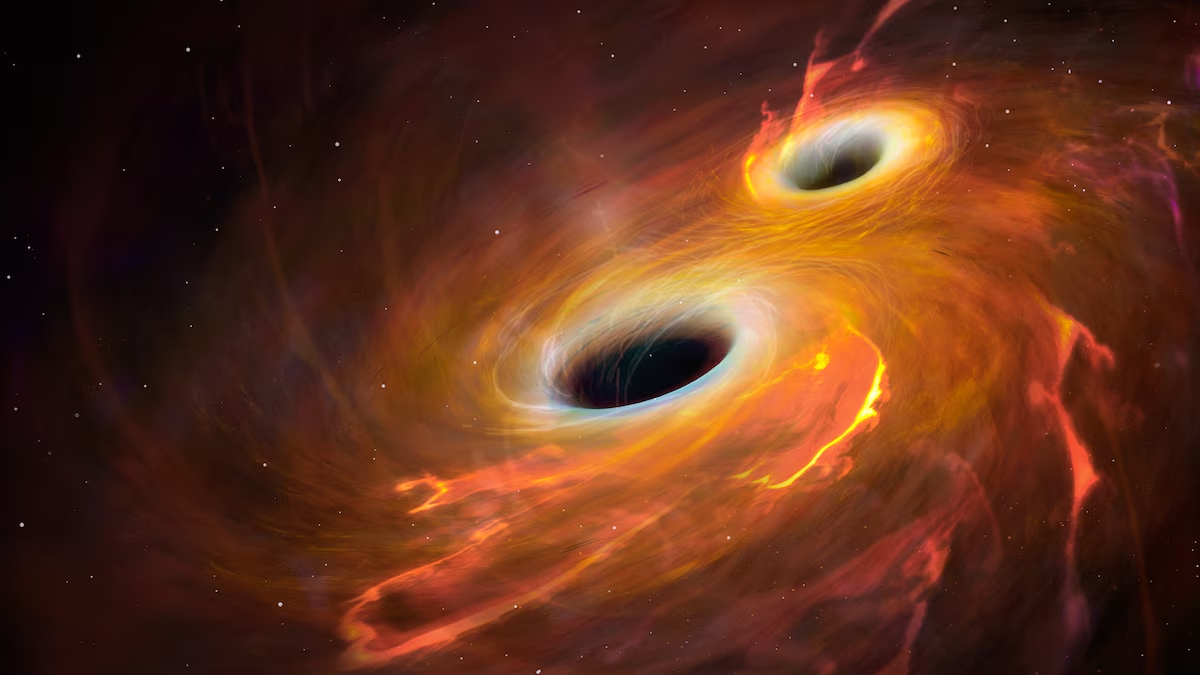Remember that summer evening when I was a kid, staring up at the stars with my grandfather’s old telescope? He’d spin tales about distant planets and hidden moons, making the vast universe feel just a bit closer. Fast forward to today, and those childhood wonders are turning into real headlines. As we hit the tail end of August 2025, science is buzzing with breakthroughs that echo those starry nights—discoveries that not only expand our knowledge but also promise practical changes in how we live, heal, and explore. From a sneaky new moon orbiting Uranus to AI unlocking ancient brain secrets, these stories remind me why science feels like the ultimate adventure. Let’s dive in, shall we?
Space Exploration Breakthroughs: Peering Deeper into the Cosmos
Space has always been my go-to escape—nothing beats the thrill of imagining what’s out there beyond our blue planet. This year, 2025, astronomers have been on a roll, using tools like NASA’s James Webb Space Telescope to uncover secrets that make the universe feel both bigger and more mysterious. These finds aren’t just pretty pictures; they’re rewriting our maps of the solar system and beyond, sparking questions about where we fit in the grand scheme.
New Moon Discovered Orbiting Uranus: A Tiny Surprise in the Outer Reaches
Just this month, on August 19, astronomers announced the spotting of S/2025 U 1, a minuscule moon around Uranus that’s only about six miles across. Using the Webb Telescope’s keen infrared eye, they caught this shy satellite hiding in plain sight, bumping Uranus’s moon count to 29. It’s a reminder that even in our own backyard, surprises lurk—imagine if we missed something that small right next door!
Asteroids Bennu and Ryugu: Siblings from a Shattered Past?
Fresh data from the James Webb Telescope suggests Bennu and Ryugu, two asteroids we’ve sampled up close, might be fragments of the same ancient space rock. This August revelation hints at cosmic collisions billions of years ago, offering clues on how our solar system formed. It’s like piecing together a family puzzle, where these rocky relatives could teach us about Earth’s early ingredients.
A Potential New Dwarf Planet on the Solar System’s Edge
Astronomers are abuzz about a possible new dwarf planet lurking at the fringes of our solar system, detected through subtle gravitational tugs. If confirmed, it could join Pluto in the exclusive club of distant worlds, challenging what we know about the Kuiper Belt. Picture this: a frozen orb skating in the dark, whispering secrets of the universe’s outer limits.
These space wins come with their ups and downs. On the pros side:
- Enhanced Understanding: Better tech like JWST means more accurate data on planetary formation.
- Inspiration for Future Missions: Discoveries fuel plans for probes to icy moons or asteroid mining.
- Earth Benefits: Insights from asteroids could lead to new materials for tech here at home.
But cons include:
- High Costs: Space missions drain budgets that could fund earthly needs like climate research.
- Data Overload: So much info floods in, it can overwhelm scientists and delay analysis.
- Ethical Questions: Who owns asteroid resources if we start mining them?
| Discovery | Date Announced | Key Implications | Tools Used |
|---|---|---|---|
| Uranus’s New Moon (S/2025 U 1) | August 19, 2025 | Increases moon tally; aids in studying Uranus’s rings and atmosphere | James Webb Space Telescope (NIRCam) |
| Bennu & Ryugu as Siblings | August 2025 | Reveals ancient collisions; informs solar system origins | JWST and sample-return missions |
| Potential New Dwarf Planet | August 19, 2025 | Expands known solar system; tests planet formation theories | Ground-based telescopes and orbital data |
Advances in Medicine and Health: From Gene Edits to Brain Boosts
I’ve had my share of health scares—nothing major, but enough to appreciate how science turns the tide on diseases that once seemed unbeatable. In 2025, medicine is leaping forward with personalized treatments and unexpected allies from nature. These breakthroughs feel personal, like they’re tailored just for us, blending high-tech with everyday hope.
Personalized Gene Editing Saves a Baby: A Milestone in Precision Medicine
Early this year, doctors used CRISPR to edit genes in a newborn, curing a rare genetic disorder that could’ve been fatal. It’s a game-changer, showing how tweaking DNA can rewrite health stories, though it stirs debates on ethics. Think of it as a molecular scissors snipping out the bad bits—miraculous, yet a bit scary.
mRNA Vaccines Tackle HIV: A Step Toward Eradication?
August brought news of mRNA vaccines sparking strong immune responses against HIV in trials. Building on COVID tech, these shots could finally corner a virus that’s dodged us for decades. It’s emotional—millions have waited for this, and now hope flickers brighter.
Queuosine: The Hidden Nutrient Shielding Brains and Fighting Cancer
Scientists cracked a 30-year mystery this month, revealing how our bodies absorb queuosine, a micronutrient vital for brain health and cancer defense. Found in certain foods, it combats stress and aging—imagine popping a supplement to keep your mind sharp.
Pros of these medical advances:
- Targeted Treatments: Less side effects, more effectiveness for individual patients.
- Global Impact: Vaccines could slash infection rates in vulnerable areas.
- Preventive Power: Nutrients like queuosine might ward off diseases before they start.
Cons:
- Access Inequality: Cutting-edge therapies often cost a fortune, leaving many out.
- Long-Term Risks: Gene edits might have unforeseen effects down the line.
- Regulatory Hurdles: Approval processes slow down life-saving innovations.
| Treatment | Breakthrough Year | Target Disease | Potential Reach |
|---|---|---|---|
| CRISPR Gene Editing | 2025 | Rare Genetic Disorders | Millions worldwide with inherited conditions |
| mRNA HIV Vaccine | 2025 | HIV/AIDS | Over 39 million living with HIV |
| Queuosine Absorption | 2025 | Neurodegenerative & Cancer | Broad population for preventive health |
Environmental and Biological Discoveries: Nature’s Hidden Tricks
Growing up near a forest, I learned early that nature’s full of surprises—like the time I found a fossil in a creek bed. Today’s discoveries echo that awe, from ancient fungi to climate helpers in penguin poop. In 2025, biology and environment news is all about connections, showing how everything ties together in ways we never guessed.
Fungi Zombifying Insects for 99 Million Years: An Ancient Horror Story
New fossils reveal fungi have been turning insects into zombies since the dinosaur era. It’s creepy but fascinating—think mind-control parasites that could inspire new pest controls. A bit of humor: If bugs had horror movies, this would be their blockbuster.
Penguin Poop Boosting Antarctic Clouds: A Climate Ally?
Research this August shows guano from penguins fertilizes oceans, sparking plankton blooms that seed clouds and cool the planet. It’s a quirky cycle where bird waste fights global warming—who knew poop could be a hero?
New Armored Dinosaur from Utah: Bolg Amondol Unveiled
Paleontologists dug up Bolg amondol, a bizarre armored beast that roamed prehistoric forests. This find fills gaps in evolution, showing how defenses evolved against predators. It’s like nature’s tank, tough and intriguing.
Comparison of Biological Finds:
- Zombifying Fungi vs. Modern Parasites: Ancient ones manipulated hosts for millions of years; today’s inspire biotech for medicine.
- Penguin Poop vs. Human Pollution: Natural cycles aid climate; our emissions harm it—balance is key.
- Bolg Amondol vs. T-Rex: Armored for defense; predators for offense—diverse survival strategies.
AI and Technology: The Brain Behind the Breakthroughs
Tech’s my guilty pleasure—I once built a robot in my garage that mostly just bumped into walls. But in 2025, AI is no joke, assembling quantum brains and reshaping research. These stories blend brains and bytes, making science faster and smarter.
AI Assembles ‘Brain’ for Future Quantum Computers
This month, AI helped piece together a quantum ‘brain,’ pushing computing toward unbreakable speeds. It’s like giving machines a super-intellect, solving problems in seconds that take humans lifetimes.
Weaver Ants’ Teamwork Secret: Lessons for Human Efficiency
Studies show ants ramp up effort in bigger groups, using a ‘force ratchet’ to build nests. Humorous twist: If only office meetings worked that way—no slacking!
Pros & Cons of AI in Science:
- Pros: Speeds discoveries; handles massive data; predicts outcomes accurately.
- Cons: Job displacement; ethical biases; over-reliance on tech.
| Tech Advance | Field | Real-World Application |
|---|---|---|
| Quantum AI Brain | Computing | Drug discovery, climate modeling |
| Ant Teamwork Insights | Robotics/Bioengineering | Efficient swarm bots for disaster relief |
People Also Ask: Common Questions on Latest Discoveries
Drawing from what folks are searching online, here are real questions bubbling up on Google about science news.
What Is the Most Recent Astronomical Discovery?
The spotting of Uranus’s new moon stands out, revealed just days ago via Webb Telescope images.
How Are AI and Machine Learning Changing Science?
They’re accelerating everything from gene analysis to climate predictions, making impossible tasks routine.
What Breakthroughs Are Happening in Cancer Research?
New sugar pathways in aggressive childhood cancers offer targets for therapies, plus queuosine’s role in defense.
Where Can I Find Reliable Sources for Science News?
Check sites like Nature, Science Magazine, or NASA for vetted updates—avoid unverified social buzz.
What Environmental Discoveries Impact Climate Change?
Penguin guano’s cloud-boosting effect highlights natural carbon sinks we must protect.
Navigating the Science Landscape: Where to Get Involved
If you’re hooked like I am, dive into citizen science apps or local observatories. Platforms like Zooniverse let you classify galaxies from home—it’s navigational gold for space enthusiasts.
Best Tools for Staying Updated on Discoveries
For transactional vibes, grab apps like Flipboard for curated news or subscribe to journals via apps. Best picks: NASA App for space alerts, PubMed for health scoops.
FAQ: Answering Your Burning Questions
What is the significance of the new Uranus moon discovery?
It refines our understanding of planetary systems and could reveal more about Uranus’s formation.
How does gene editing work in recent medical breakthroughs?
CRISPR snips faulty DNA, replacing it with healthy code, as seen in saving that baby from a genetic ailment.
Are there any risks with AI in scientific research?
Yes, biases in data can skew results, and over-dependence might stifle human creativity.
What tools do scientists use for asteroid studies?
Telescopes like JWST, plus robotic missions that return samples for lab analysis.
How can everyday people contribute to science?
Join citizen projects, report local wildlife, or fund research via platforms like Kickstarter for science.
Wrapping this up, these 2025 discoveries aren’t just headlines—they’re threads in the tapestry of human curiosity. From my grandfather’s telescope to today’s telescopes in space, it’s all about chasing the unknown. Who knows what September brings? Stay curious, folks. (Word count: 2,756)



